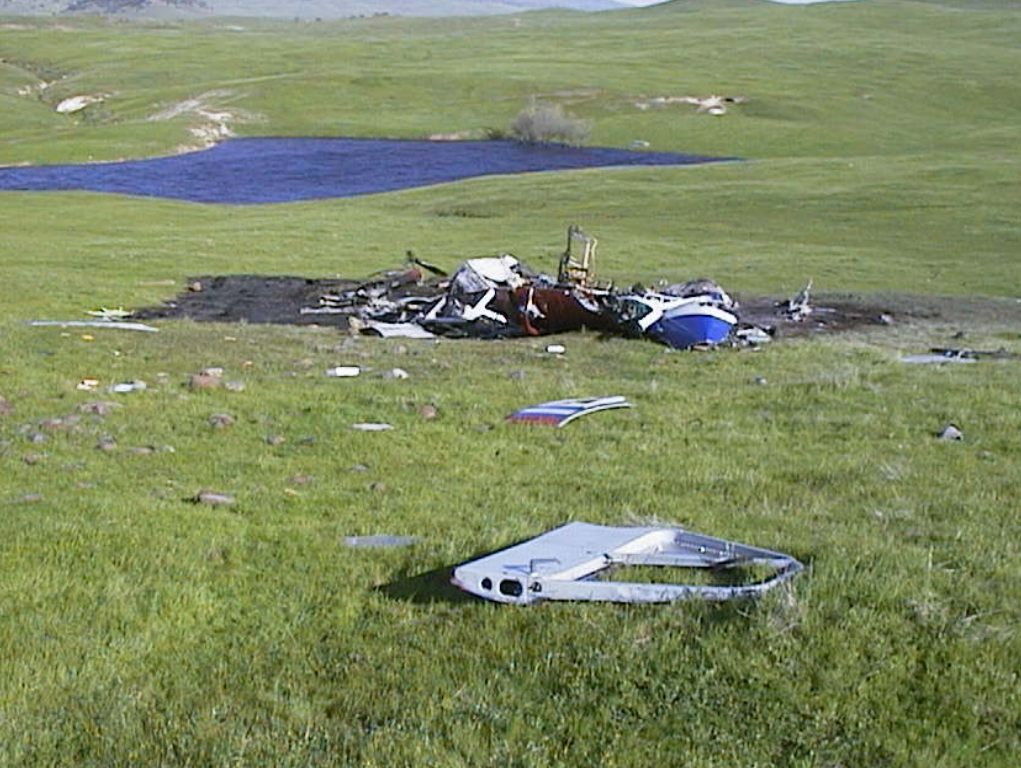
ASN Wikibase Occurrence # 30223
This information is added by users of ASN. Neither ASN nor the Flight Safety Foundation are responsible for the completeness or correctness of this information.
If you feel this information is incomplete or incorrect, you can submit corrected information.
| Date: | Sunday 19 March 2000 |
| Time: | 15:45 |
| Type: |  Bell 212 |
| Owner/operator: | Aviation International Rotors Inc (A.I.R) |
| Registration: | N415B |
| MSN: | 30613 |
| Year of manufacture: | 1974 |
| Total airframe hrs: | 15190 hours |
| Engine model: | Pratt & Whitney PR-6-3 |
| Fatalities: | Fatalities: 1 / Occupants: 1 |
| Aircraft damage: | Destroyed |
| Category: | Accident |
| Location: | Snelling, CA -
 United States of America United States of America
|
| Phase: | En route |
| Nature: | Ferry/positioning |
| Departure airport: | Fresno Yosemite International Airport, CA (FAT) |
| Sacramento International Airport, CA (SMF) | |
| Investigating agency: | NTSB |
| Confidence Rating: |
On March 19, 2000, at 1545 Pacific standard time, a Bell 212 helicopter, N415B, was destroyed after impacting terrain following a loss of control while in cruise flight near Snelling, California. The commercial pilot, who was the sole occupant, received fatal injuries. The aircraft was being operated as a positioning flight by Aviation International Rotors (A.I.R.), Inc., Apple Valley, California, under 14 CFR Part 91 when the accident occurred. The flight originated from Fresno, California, at 1515, and was destined for Sacramento, California. Visual meteorological conditions prevailed at the time and a company visual flight rules (VFR) flight plan had been filed.
The twin-engine helicopter impacted terrain following a mast bumping event and subsequent the loss of control. The helicopter was the second in a flight of two and trailed the lead helicopter by a short distance. The lead pilot noticed the second helicopter wreckage after the pilot did not receive a radio response from the accident pilot; he reported receiving no distress transmissions from the accident pilot. The first helicopter pilot reported they were in cruise flight between 400 - 500 feet agl at 100 knots. He said that he encountered a large bird about 1 mile before the accident. A 12-foot section of one of the main rotor blades was found early on in the wreckage debris path, which equaled approximately 1,000 feet in length and was oriented along the flight's course. Cut portions of the left skid, battery door, and the left elevator were found early on in the debris path. The separated main rotor blade underwent an overhaul approximately 8.3 hours prior to the accident. The main rotor mast displayed evidence of a mast bumping event, with indentations corresponding to the blade stops. The mast separated at the blade stop area. The commercial helicopter pilot was wearing a cast on his right leg, which extended from below his knees to his toes. The pilot received a check-out flight after not flying for 3 months. According to the pilot who provided the check-out flight, the accident pilot performed a few traffic pattern operations and was found to be able to fly. A mechanic who flew with the accident pilot during the first legs of the flight indicated the pilot was able to fly with no problems. Though there was evidence of a mast bumping event, the initiating event is unknown. Examination of the wreckage disclosed no anomalies that would have prevented normal system operation and the engines displayed evidence of rotation at the time of ground impact. The main rotor blade with the separated section was examined and it was noted that its failure was a result of overload separation and did not delaminate in flight.
Probable Cause: the in-flight separation of the main rotor mast while in cruise flight following a mast bumping event. The reason for the mast bumping event was not determined.
Accident investigation:
 |
|
Sources:
NTSB: https://www.ntsb.gov/_layouts/ntsb.aviation/brief.aspx?ev_id=20001212X20659&key=1
Location
Images:

Photo: NTSB
Revision history:
| Date/time | Contributor | Updates |
|---|---|---|
| 27-Sep-2008 01:00 | ASN archive | Added |
| 08-Nov-2013 10:16 | TB | Updated [Other fatalities, Country, Source, Damage, Narrative] |
| 21-Dec-2016 19:16 | ASN Update Bot | Updated [Time, Damage, Category, Investigating agency] |
| 21-Dec-2016 19:20 | ASN Update Bot | Updated [Time, Damage, Category, Investigating agency] |
| 07-Nov-2017 13:43 | TB | Updated [Operator, Total fatalities, Total occupants, Location, Phase, Nature, Departure airport, Destination airport, Source, Narrative] |
| 12-Dec-2017 18:28 | ASN Update Bot | Updated [Operator, Departure airport, Destination airport, Source, Narrative] |
| 21-Oct-2022 19:24 | Captain Adam | Updated [Operator, Departure airport, Destination airport, Narrative, Accident report, Photo] |
Corrections or additions? ... Edit this accident description
The Aviation Safety Network is an exclusive service provided by:


 ©2024 Flight Safety Foundation
©2024 Flight Safety Foundation